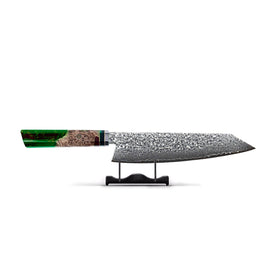
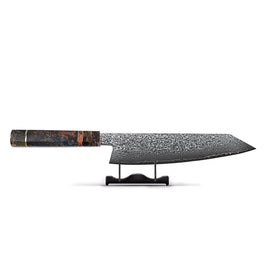
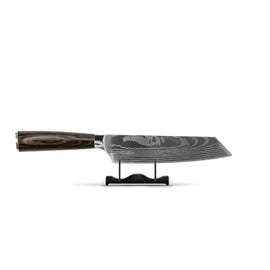
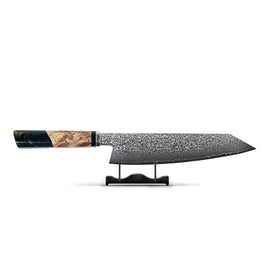
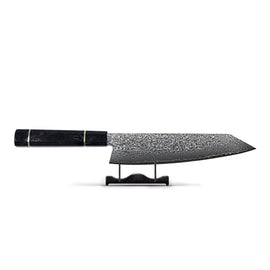
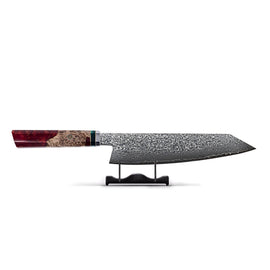
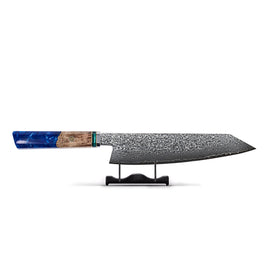
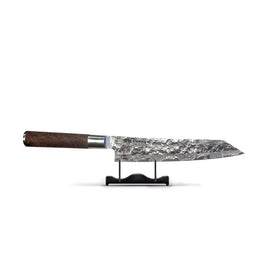
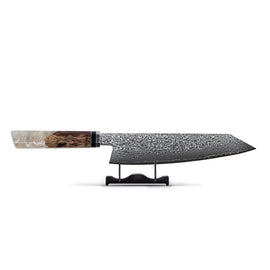
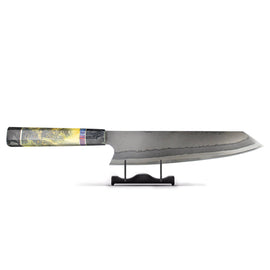
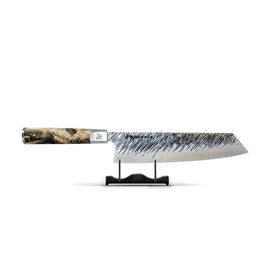
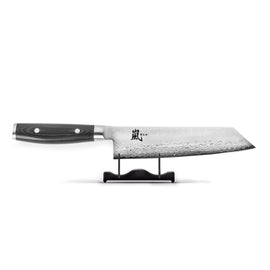
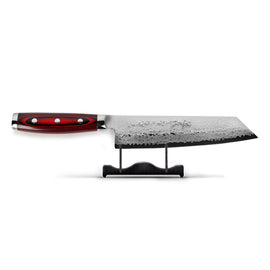
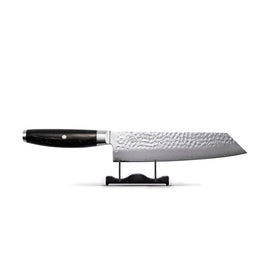

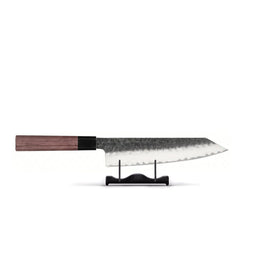
A Kiritsuke knife is a combination of the characteristics of Japanese Usuba's and Yanagiba's. An usuba (nakiri knife) is used for cutting vegetables and a yanagiba (sushi knife) is used for cutting sushi and sashimi. With this special combination of features, a Kiritsuke is very suitable for general purposes. In addition, the knife is ideal for preparing Japanese dishes.
The Kiritsuke knife is actually a chef's knife, as we know it here in the West, but with a Japanese twist. A chef's knife is also known as a Gyuto. A Kiritsuke knife is also called K-Tip Gyuto. Where an 'ordinary' chef's knife is finished with a bulge, a Kiritsuke knife is finished with a corner on the back of the blade. The angle on the blade ensures that the blade has the shape of the letter 'K', hence K-Tip. Thanks to this finish, you can cut your vegetables, meat and other ingredients even more easily.
According to Japanese tradition, the Kiritsuke knife is a multi-functional kitchen knife. You can use the knife to cut meat, fish, vegetables, herbs and fruit. Just like the 'traditional' chef's knife, the Kiritsuke knife has a high blade at the heel of the knife. The heel of a Kiritsuke knife is relatively flat, but the point ends in a bulge. As a result, the push-cut and pull-cut cutting techniques best suit this knife. The extremely sharp angle of the tip of the Kiritsuke knife also allows for finer cutting, such as finely chopping herbs.
A real Japanese Kiritsuke knife is always made of Damascus steel. This type of steel is extremely hard, so the blade does not necessarily have to be very thick to achieve its strength. This also means that the blade of a Kiritsuke knife is extremely thin. As a result, it is lightweight and easy to use. It ensures that you can cut with extreme precision. A Kiritsuke knife is not only extremely thin, but also extremely sharp. The high hardness of the steel also ensures that the cutting edge can be sharpened at an angle of 15 degrees. That makes it a lot sharper than the Western knives, which are sharpened at an angle of 20 degrees. So you will really notice the difference when you cut with a Kiritsuke knife. The Octagon Kiritsuke knives are sharpened at an angle of 15 degrees and have a Damascus steel blade of no less than 23 cm! These beautiful Kiritsuke knives have an octagonal handle with jewel-inspired colors such as Emerald green , Ruby red , Sapphire blue , Diamond white and Onyx black .
Do you use the Kiritsuke knife regularly? Then it may be that the knife becomes blunt. You can easily check whether your knife is still sharp enough with the paper test. In one hand you hold an A4 sheet. With the other hand, cut off a piece of paper with the knife. Do you cut a piece of paper without any resistance? Then you know that your Kiritsuke knife is still sharp enough. Is the cutting movement less smooth? Then it is wise to sharpen your Kiritsuke knife. For example, you can use a sharpening stone , also known as a whetstone.
Are all your ingredients cut? Then it's time to clean the Kiritsuke knife. We strongly advise against cleaning your Kiritsuke knife in the dishwasher. Kiritsuke knives are made of high quality materials. To ensure that the Damascus steel blade and the wooden handle are not damaged and remain in top condition, it is important to wash a Kiritsuke knife by hand. Use mild detergent and warm water for this. Dry the Kiritsuke knife well before putting it back in the kitchen drawer.